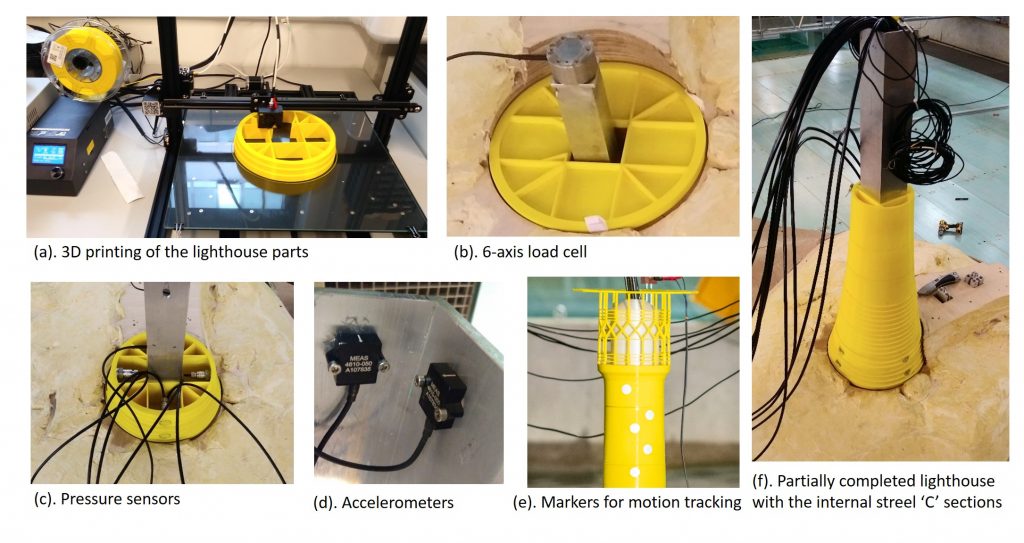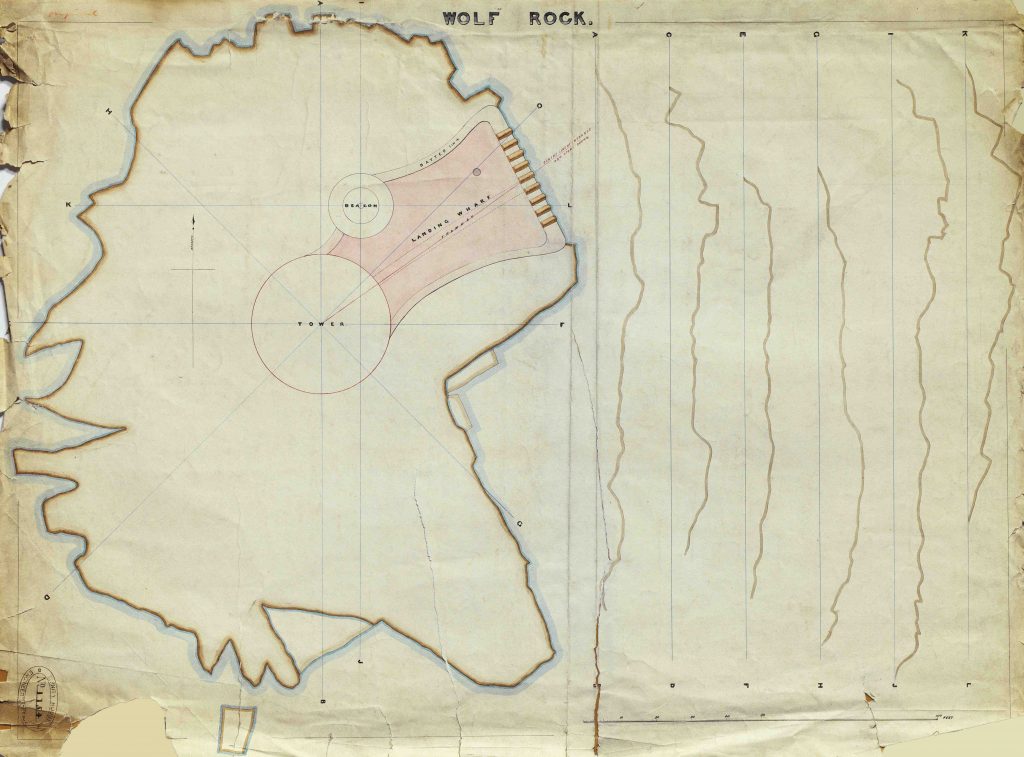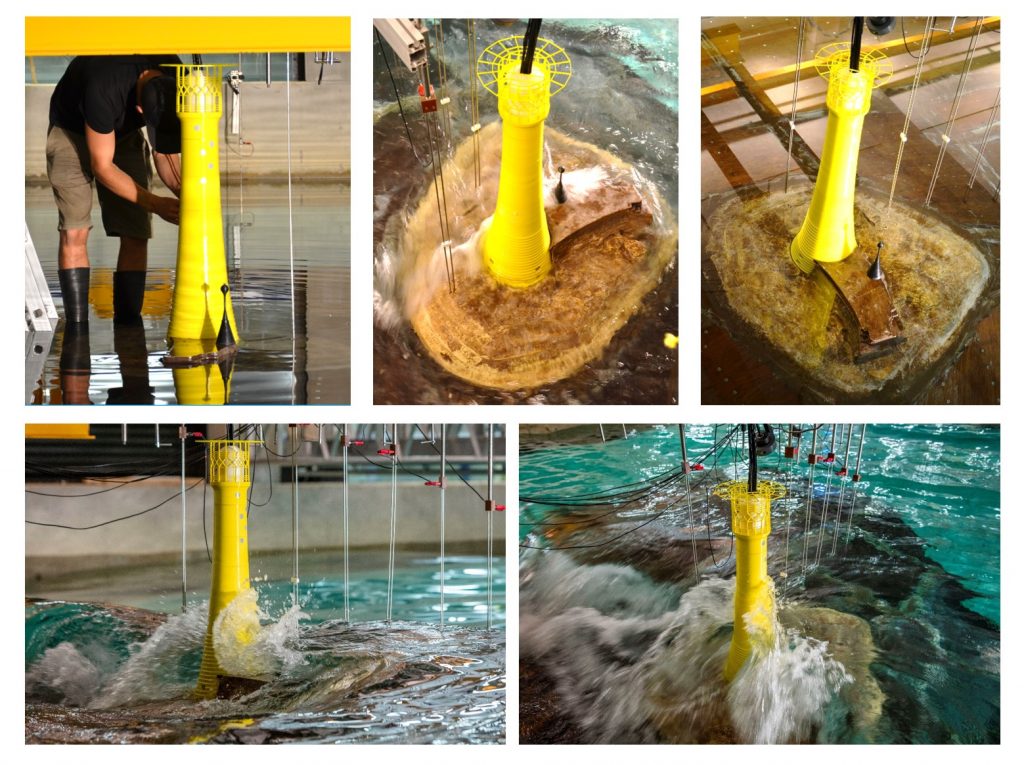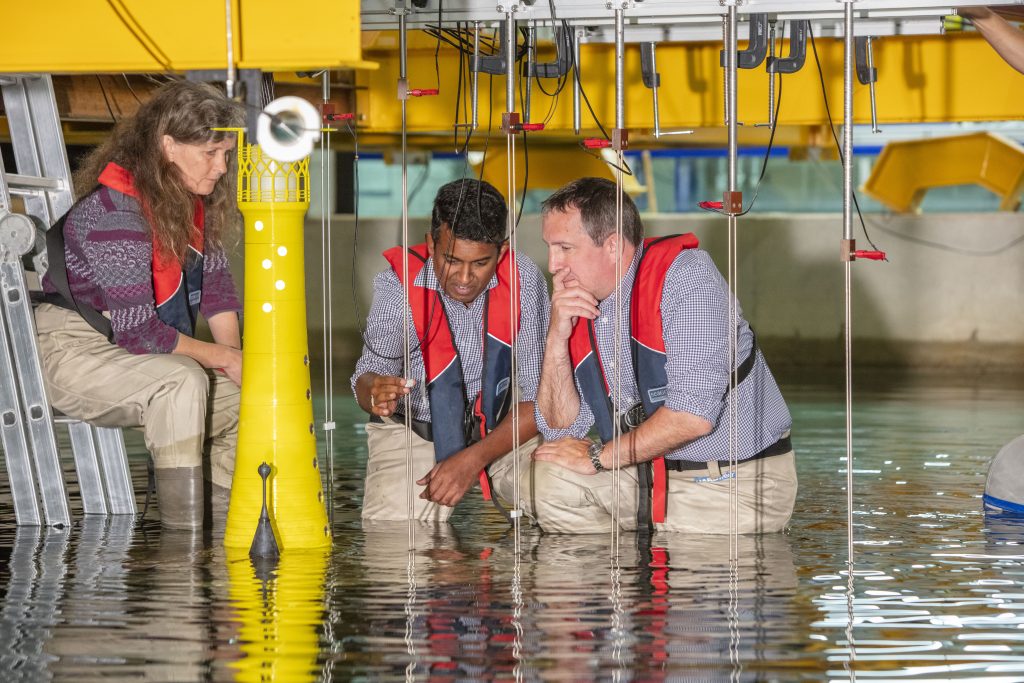Experiments the lighthouse designers would like to have undertaken
September 2019 saw the pinnacle of the STORMLAMP physical modelling investigations in the University of Plymouth COAST Laboratory. In previous tests an instrumented 1:81 scale cylinder on generic reef slopes was tested, in both the glass-walled flumes and the Coastal Basin. But the latest tests ‘went large’ with a 1:40 scale model of the actual Wolf Rock lighthouse. The model was represented in meticulous detail, right down to the 1970s helideck structure at lantern level which had to be assembled like an airfix kit. The granite part of the lighthouse comprised eleven 3D printed parts. The external appearance looks very simple and elegant, but it hides a complex internal structure that houses a 6 axis load cell, 3 accelerometers and 12 pressure transducers, with the structure strengthened with a steel C-section core.

The life-like representation didn’t stop at the lighthouse itself. The reef that it marks was also carefully represented with a structure built to scale out of marine ply, right down to the 48 m contour line. Data for the reef came from several sources: archive drawings gave several transects at the top of the rock, a Trinity House survey provided a detailed bathymetry of the rock and vicinity covering an approximate area of 1 km2, and an aerial survey conducted by Peter Ganderton provided fine details of the rock above the water level. These were carefully stitched together to produce the final shape. In retrospect that was the easy part compared to the construction!

The first stage was to lift the Ocean basin moving floor up out of the water, as it’s designed to do, to assist with model deployments. Batons were screwed to fixing points that are spaced at 1 m intervals across the floor. Next, ‘ribs’ of the reef, obtained using a water jet cutter were fixed in the vertical plane and strengthened with noggins. The entire structure was then clad with 4 mm marine ply sheets and fixed in place. In total some 3,000 screws were used!
The crowning glory of the reef was obviously the lighthouse, which looks a little stark in canary yellow, but allows for the most effective distinguishing of water and the model.


Leave a Reply